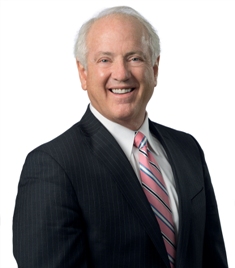Mental health vs. mental illness
What is the difference between mental health and mental illness? The former refers to our emotional and psychological state, our social well–being and how we feel about ourselves and interact with others. Mental health is not the same as mental illness, although poor mental health can lead to mental and physical illnesses.
When we have good mental health, we are resilient, can handle life’s challenges and stresses, have meaningful relationships and make sound decisions. Being mentally healthy, like being physically healthy, is important at every stage of life, from childhood and adolescence through adulthood and old age.
Being mentally healthy is influenced by life experiences, relationships with others, physical health and one’s environment. Just as people may experience physical problems over the course of their lives, they may also experience emotional or mental health problems that affect their thinking, mood and behaviors. This does not necessarily mean that a person who is going through a difficult time and is experiencing poor mental health has a mental illness. Feeling miserable and socially isolated are red flags that one’s mental health needs attention.
The benefits of improving one’s mental health are well worth the effort. Being mentally healthy helps you feel confident in your worth and abilities, accept your strengths and weaknesses, set realistic goals and create a sense of meaning and purpose in your life. Emotional health and mental health are closely intertwined, and both can positively or negatively impact physical health as well.
What is Mental Illness?
Mental illness refers to a wide range of disorders that affect mood, thinking and behavior. Mental illness can affect anyone regardless of age, gender, social standing, religion or race/ethnicity. People with mental illness often experience distress and problems functioning at work, home and in social situations. Mental illness is not something the person can “overcome with willpower,” and can be caused by biological factors such as genes or brain chemistry, trauma and abuse, and family history of mental illness.
The major types of mental illness include:
• Depression
• Anxiety
• Mood disorders, including bipolar
• Personality disorders
• Schizophrenia
• Trauma disorders
• Eating disorders
• Addictive behaviors
Mental illnesses are common in America, and approximately one in five adults lives with a mental illness (43.8 million in 2015.)1 While depression and anxiety are two of the most common disorders, mental illness includes many different conditions that range from mild to moderate to severe. People who don’t have a mental illness might still be impacted by the mental illness of a friend or family member.
Signs and symptoms of mental illness vary, but may include changes in sleep, appetite, and energy level, severe mood swings, persistent thoughts or compulsions, hearing voices, social withdrawal, feeling sad, hopeless, or agitated, having trouble performing everyday tasks, or wanting to hurt oneself or others.
With the right treatment, people can and do recover from mental illness. Friends and family members can be important influences to help someone get the treatment and services they need. Primary care physicians can refer individuals to psychiatrists and other professionals who specialize in mental health treatment. Treating a physical illness might require medications and physical therapy, and treating a mental illness might also require medications and different therapies. For many people, the first step is to recognize there is a problem and be willing to accept help.
For more information on treatment resources, contact:
National Institute of Mental Health
https://www.nimh.nih.gov/health/find-help/index.shtml
NAMI (National Alliance on Mental Illness)
http://www.nami.org/
Substance Abuse and Mental Health Services Administration (SAMHSA) https://findtreatment.samhsa.gov/https://www.mentalhealth.gov/
Mental Health.gov
https://www.mentalhealth.gov/
Help is available. For additional information, visit MagellanHealth.com/MYMH
1. https://www.nami.org/learn-more/mental-health-by-the-numbersd to replace a visit with a provider. Magellan Health does not endorse other resources that may be mentioned
Read more more about this topic from Magellan Health Insights
 Magellan’s own Chairman and CEO, Barry M. Smith, was recently featured in Behavioral Healthcare Executive, talking about the importance of prioritizing behavioral health as a part of disaster recovery.
Magellan’s own Chairman and CEO, Barry M. Smith, was recently featured in Behavioral Healthcare Executive, talking about the importance of prioritizing behavioral health as a part of disaster recovery.